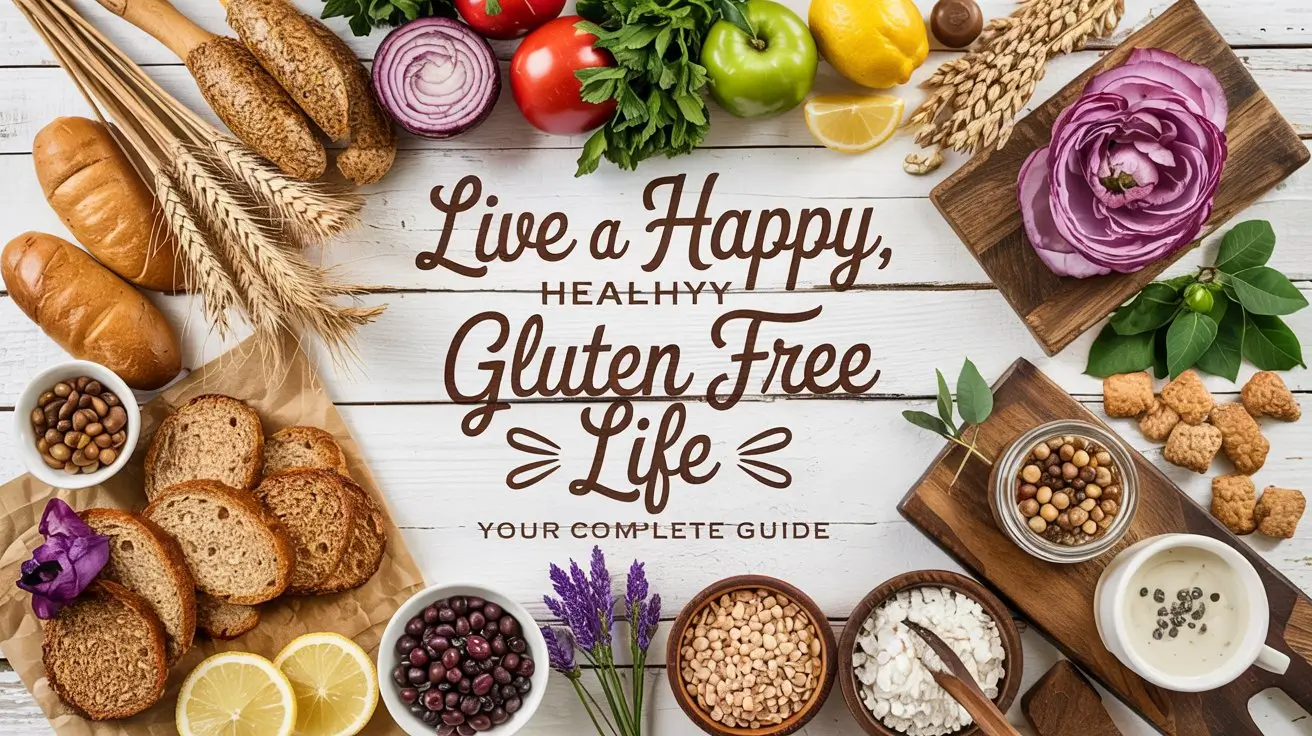In recent years, the idea of living gluten free has gained significant attention, and for good reason. For individuals with celiac disease, gluten intolerance, or sensitivity, adopting a gluten free lifestyle isn’t just a choice; it’s a necessity for maintaining optimal health. But even for those without these conditions, embracing gluten free eating can open the door to a world of delicious, nutrient-rich foods that support overall well-being.
Living a happy, healthy, gluten free life doesn’t mean sacrificing flavor, variety, or enjoyment in your meals. In fact, it’s quite the opposite. With the right knowledge, tools, and mindset, you can transform your diet into one that’s not only free of gluten but also packed with wholesome ingredients that nourish your body and soul.
Craving fresh, homemade gluten-free bread? Check out The Best Gluten-Free Bread Recipe: No-Fail Tips for Perfect Homemade Loaves to bake a delicious, bakery-worthy loaf right in your kitchen!
Whether you’re newly diagnosed, exploring gluten-free options, or simply curious about this way of eating, this guide is here to help. From understanding the basics of gluten to practical tips for thriving on a gluten free diet, we’ll walk you through everything you need to know to live your best gluten-free life. Let’s get started!
What Does It Mean to Live Gluten Free?
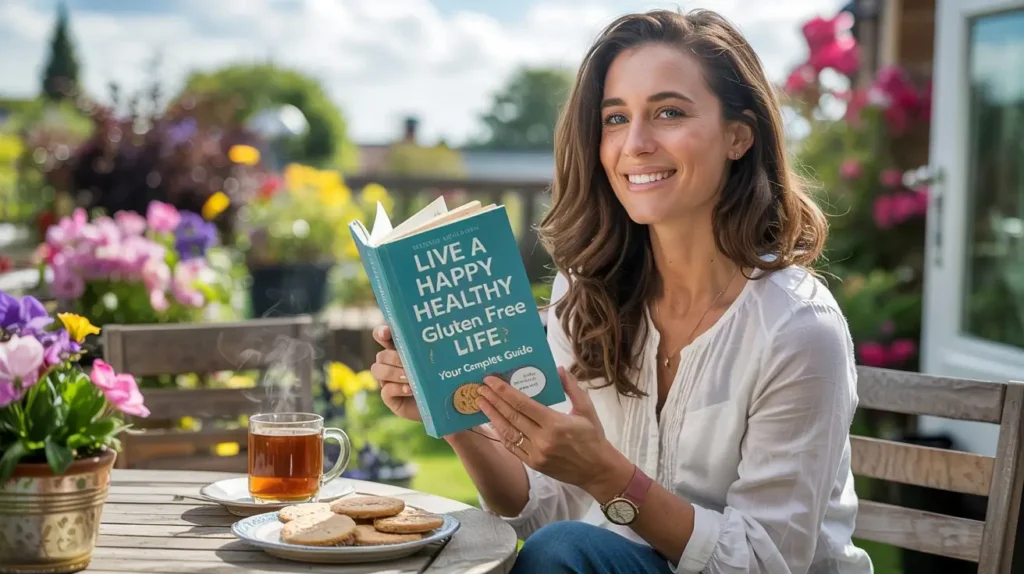
Living gluten free is more than just a trendy diet, it’s a lifestyle choice that can transform your health and well-being, especially if you’re sensitive to gluten or have been diagnosed with celiac disease. But before we dive deeper into how to embrace this way of living, let’s take a moment to understand what gluten actually is, why it matters, and why eliminating it from your diet can make such a difference.
Understanding Gluten and Its Impact on Health
So, what exactly is gluten? Simply put, gluten is a protein found in certain grains like wheat, barley, and rye . It acts as a binding agent, giving dough its elasticity and helping foods like bread and pasta hold their shape. While gluten is harmless for most people, it can wreak havoc on the bodies of those with celiac disease or gluten intolerance .
For individuals with celiac disease, consuming gluten triggers an autoimmune response that damages the lining of the small intestine. This damage can lead to a host of unpleasant symptoms, like bloating, diarrhea, fatigue, and even nutrient deficiencies over time. On the other hand, people with non-celiac gluten sensitivity (NCGS) may not experience intestinal damage but still feel symptoms like brain fog, joint pain, or digestive discomfort after eating gluten-containing foods.
But here’s the good news: eliminating gluten from your diet can bring about incredible health benefits. Many people report improved digestion , reduced inflammation , and even increased energy levels once they cut gluten out of their meals. For those with celiac disease, going gluten-free isn’t just beneficial, it’s essential for healing the gut and preventing long-term complications.
And while gluten-free living is often associated with medical necessity, many others choose this path because they notice how much better they feel without gluten. Whether you’re managing a condition or simply exploring healthier ways to nourish your body, understanding gluten’s role in your health is the first step toward thriving in a gluten free lifestyle.
Common Misconceptions About Gluten-Free Diets
Now, let’s clear something up right away: there are plenty of misconceptions floating around about gluten free diets, and I want to set the record straight. You’ve probably heard someone say, “Gluten-free means unhealthy,” or maybe you’ve seen headlines labeling it as “just another fad diet.” But trust me, these myths couldn’t be further from the truth, at least when done the right way.
Myth #1: A Gluten-Free Diet Is Automatically Unhealthy
One of the biggest misunderstandings is that gluten free equals junk food. Sure, some packaged gluten-free products might be loaded with sugar, unhealthy fats, or artificial ingredients, but that doesn’t mean the entire diet is unhealthy. In fact, a well-planned gluten-free lifestyle focuses on whole, nutrient-dense foods like fresh fruits, vegetables, lean proteins, nuts, seeds, and naturally gluten free grains like quinoa and brown rice. When you prioritize whole foods over processed ones, a gluten-free diet can be incredibly nutritious, and delicious!
Myth #2: Gluten-Free Eating Is Just a Fad
While it’s true that gluten free diets have gained popularity in recent years, calling them a “fad” undermines the very real needs of people with celiac disease and gluten sensitivity. For these individuals, avoiding gluten isn’t a trend, it’s a lifelong commitment to staying healthy. And for others who don’t have a medical reason to go gluten free, choosing this path can still be a thoughtful decision to support gut health, reduce inflammation, or simply explore new ways of eating.
Myth #3: Gluten-Free Food Tastes Bland
Oh, how wrong this one is! There’s a whole world of flavorful, satisfying gluten-free options waiting for you. From zucchini noodles tossed in creamy avocado sauce to rich chocolate cake made with almond flour, gluten free cooking can be just as indulgent and exciting as traditional recipes. The key is getting creative in the kitchen and experimenting with alternative ingredients. Trust me, you won’t miss gluten once you discover all the amazing flavors it has to offer.
By now, I hope you’re starting to see that living gluten-free isn’t about restriction, it’s about empowerment. It’s about taking control of your health, fueling your body with wholesome foods, and finding joy in every bite. So whether you’re doing it out of necessity or curiosity, remember this: a glute -free lifestyle can be both healthy and fulfilling when approached with knowledge and intention.
How to Start a Gluten-Free Lifestyle
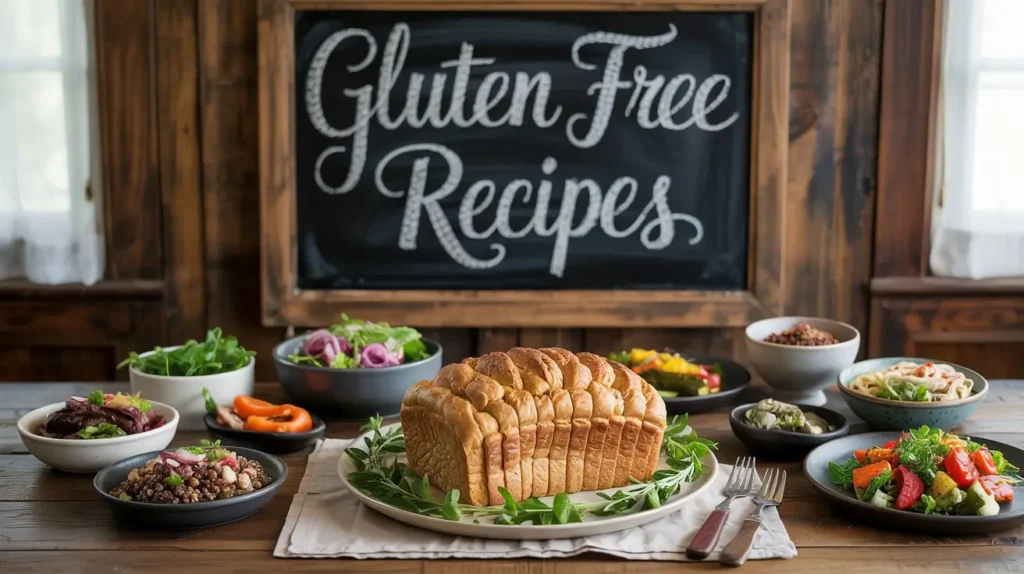
Starting a gluten-free lifestyle might feel overwhelming at first, but don’t worry, I’m here to guide you every step of the way. Whether you’re transitioning because of celiac disease, gluten intolerance, or simply to explore healthier eating habits, the key is preparation and education. By taking it one step at a time, you’ll soon find that living gluten free isn’t just manageable, it’s empowering. Let’s break it down into three simple steps.
Step 1: Educate Yourself About Gluten-Free Foods
The foundation of any successful gluten free journey starts with understanding what foods are safe to eat, and which ones aren’t. Knowledge truly is power here, so let’s dive in.
Foods to Avoid
First things first: gluten hides in many common foods, especially processed ones. If you’re new to this lifestyle, it’s important to familiarize yourself with the main culprits. Here’s a quick list of foods that typically contain gluten:
- Bread and baked goods: Sandwich bread, bagels, muffins, cakes, cookies, and pastries.
- Pasta: Traditional wheat-based pasta, including spaghetti, macaroni, and lasagna noodles.
- Breakfast cereals: Many cereals are made with wheat or barley, so always check the label.
- Sauces and condiments: Soy sauce, salad dressings, marinades, and gravies often contain hidden gluten.
- Processed snacks: Crackers, pretzels, and even some chips can be off-limits unless labeled gluten-free.
It’s also worth noting that gluten can sneak into unexpected places, like soups, candy, and even certain medications. But don’t let that scare you, we’ll talk about how to identify these sneaky sources later.
Naturally Gluten-Free Foods
Now for the good news: there are so many delicious and nutritious foods that are naturally free of gluten! These include:
- Fresh fruits and vegetables: Apples, berries, spinach, broccoli, you name it. Nature’s bounty is naturally gluten free.
- Lean proteins: Chicken, turkey, beef, fish, eggs, and tofu are all safe bets. Just be mindful of how they’re prepared (e.g., avoid breaded or marinated options unless labeled gluten-free).
- Gluten-free grains: Quinoa, rice, buckwheat, millet, and sorghum are fantastic alternatives to gluten-containing grains.
- Nuts and seeds: Almonds, walnuts, chia seeds, flaxseeds, and sunflower seeds make great snacks or toppings.
- Dairy products: Most plain milk, cheese, and yogurt are gluten free, though flavored varieties may require extra scrutiny.
By focusing on these naturally gluten free foods, you’ll not only stay healthy but also discover how vibrant and satisfying gluten-free eating can be. Trust me, your taste buds will thank you!
Step 2: Stock Your Pantry with Gluten-Free Essentials
Once you’ve got a handle on what to eat (and what to avoid), it’s time to stock your pantry with gluten free staples. Having the right ingredients on hand makes meal prep easier and ensures you’re never caught off guard when hunger strikes.
Must-Have Gluten-Free Pantry Staples
Here’s a list of essentials to keep in your kitchen:
- Grains: Quinoa, brown rice, wild rice, gluten free oats (look for certified gluten-free brands), and cornmeal.
- Flours: Almond flour, coconut flour, chickpea flour, tapioca flour, and arrowroot powder are excellent substitutes for wheat flour in baking.
- Pasta alternatives: Rice noodles, lentil pasta, chickpea pasta, and zucchini noodles (zoodles!) are tasty swaps for traditional pasta.
- Snacks: Rice cakes, popcorn, gluten-free crackers, and nut mixes make for convenient, satisfying snacks.
- Cooking oils and sauces: Olive oil, avocado oil, coconut oil, and gluten free soy sauce (like tamari) are must-haves for cooking and flavoring dishes.
Popular Gluten-Free Brands You Can Trust
Navigating store shelves can feel daunting, but thankfully, there are plenty of trusted brands that cater to gluten free diets. Some of my favorites include:
- Bob’s Red Mill: Known for their wide range of gluten-free flours, grains, and baking mixes.
- Udi’s: Offers everything from gluten free bread to pizza crusts and desserts.
- Glutino: A go-to brand for gluten-free snacks, crackers, and pantry staples.
- Enjoy Life Foods: Perfect for allergy-friendly snacks like cookies, granola bars, and chocolate chips.
These brands take the guesswork out of shopping by clearly labeling their products as gluten free. Plus, many of them undergo rigorous testing to ensure safety for those with celiac disease or severe gluten sensitivities.
Step 3: Learn to Read Labels Carefully
One of the most important skills you’ll develop on your gluten-free journey is learning how to read food labels. Gluten can hide in surprising places, so paying attention to ingredient lists is crucial.
How to Spot Hidden Gluten
Here are some tips to help you become a label-reading pro:
- Look for keywords like “wheat,” “barley,” “rye,” or “malt” in the ingredients list. These indicate the presence of gluten.
- Be cautious with terms like “natural flavors,” “modified food starch,” or “hydrolyzed vegetable protein,” as these may sometimes contain gluten.
- Check for allergen statements. In many countries, manufacturers are required to disclose if a product contains wheat, but remember, gluten can come from other sources too, like barley or rye.
Understanding Gluten-Free Certifications
To simplify your life, look for products with third-party certifications. The Gluten Free Certification Organization (GFCO) logo is one of the most recognized symbols, ensuring that a product meets strict standards for being gluten-free. Other certifications, like the “Certified Gluten Free” seal from organizations such as Beyond Celiac, provide additional peace of mind.
When in doubt, err on the side of caution. If a label doesn’t explicitly state “gluten free,” it’s best to skip it until you can confirm its safety. Over time, you’ll build confidence in identifying gluten-free products and knowing which brands you can trust.
Starting a gluten free lifestyle doesn’t have to be complicated. With a little education, smart pantry planning, and careful label reading, you’ll be well on your way to embracing this new chapter with ease. And remember, I’m cheering you on every step of the way!
Top Tips for Living a Happy, Healthy Gluten-Free Life
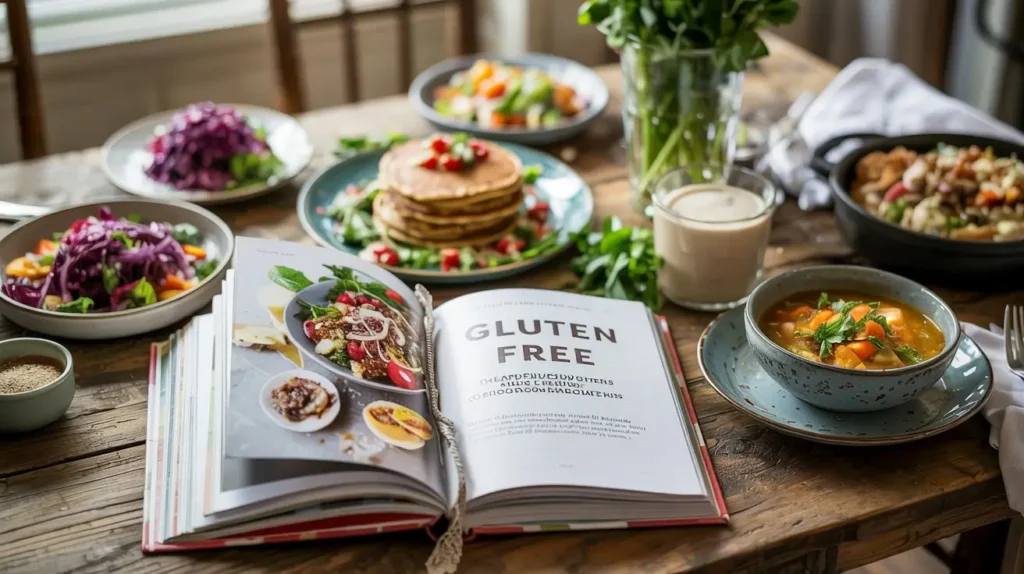
Living gluten-free doesn’t mean sacrificing flavor, variety, or fun, it’s all about finding balance, creativity, and confidence in your choices. Whether you’re cooking at home, dining out with friends, or navigating social gatherings, there are plenty of ways to thrive on this journey. Let me share some of my favorite tips to help you live your happiest, healthiest gluten free life.
Focus on Balanced Nutrition
One of the most important aspects of a successful gluten free lifestyle is ensuring you’re getting balanced nutrition. Just because you’re avoiding gluten doesn’t mean you should miss out on essential nutrients. A well-rounded diet includes proteins, carbohydrates, and healthy fats, all of which can be easily incorporated into your gluten-free meals.
Why Balance Matters
When you eliminate gluten-containing grains like wheat, it’s crucial to replace them with nutrient-dense alternatives. Otherwise, you might end up feeling tired or missing key vitamins and minerals. The goal is to nourish your body with wholesome, satisfying foods that keep you energized and thriving.
Examples of Balanced Gluten-Free Meals
Here are some ideas to inspire your meal planning:
- Breakfast: Scrambled eggs with spinach and avocado, served with a side of gluten free toast made from almond flour bread.
- Lunch: Grilled chicken salad with mixed greens, cherry tomatoes, cucumbers, and quinoa, topped with olive oil and lemon dressing.
- Dinner: Baked salmon with roasted sweet potatoes and steamed broccoli.
- Snack: Apple slices with almond butter or a handful of trail mix made with nuts and seeds.
By focusing on whole, unprocessed foods, you’ll not only avoid gluten but also fuel your body with the nutrients it needs to stay strong and healthy. And don’t forget, balance isn’t just about food; it’s also about enjoying treats in moderation. Yes, even gluten free desserts have a place in a balanced diet!
Get Creative in the Kitchen
Cooking gluten-free can actually be a lot of fun once you start experimenting with new ingredients and techniques. Trust me, your kitchen will become a playground for creativity—and your taste buds will thank you!
Gluten Free Baking Made Easy
Baking without gluten might seem intimidating at first, but with the right substitutes, you’ll be whipping up delicious treats in no time. Here are a few tips to get you started:
- Almond flour: Perfect for cookies, cakes, and muffins, almond flour adds moisture and richness to baked goods. Try making almond flour brownies, they’re absolutely decadent!
- Coconut flour: This super-absorbent flour works great for pancakes, waffles, and quick breads. Just remember, a little goes a long way, start with small amounts and adjust as needed.
- Gluten-free oats: Certified gluten-free oats are a versatile ingredient for granola bars, oatmeal cookies, and even savory dishes like meatloaf.
If you’re looking for easy recipes to try, here are a few links to get you inspired:
- Gluten-Free Chocolate Chip Cookies (using almond flour!)
- Savory Zucchini Bread Muffins (perfect for breakfast or snacks!)
- Fluffy Pancakes Made with Coconut Flour
Think Outside the Box
Don’t limit yourself to traditional recipes, get creative with gluten free swaps! For example:
- Use lettuce wraps instead of sandwich bread.
- Swap regular pasta for spiralized zucchini noodles (“zoodles”) or spaghetti squash.
- Make pizza crusts out of cauliflower rice or chickpea flour.
The possibilities are endless, and the more you experiment, the more you’ll realize how versatile gluten-free cooking can be.
Stay Social Without Stress
Let’s face it, social situations can sometimes feel tricky when you’re gluten-free. From restaurant outings to holiday parties, navigating gluten-heavy environments requires a bit of planning and communication. But don’t worry, I’ve got your back!
Tips for Dining Out Gluten Free
Eating out doesn’t have to be stressful. Follow these tips to make dining out enjoyable and safe:
- Call Ahead: Most restaurants are happy to accommodate dietary restrictions if given advance notice. Call ahead to ask about gluten free options and ensure they take steps to prevent cross-contamination.
- Ask Questions: Don’t hesitate to speak up! Politely ask your server about how dishes are prepared and whether they contain gluten. Phrases like “I have a medical condition that requires me to avoid gluten” often prompt staff to take extra care.
- Choose Naturally Gluten Free Dishes: Opt for menu items that are naturally free of gluten, such as grilled meats, seafood, salads (with gluten-free dressings), and vegetable-based dishes.
Navigating Social Gatherings
Attending potlucks, family dinners, or office parties? Here’s how to handle them confidently:
- Bring Your Own Dish: Offer to contribute a gluten free dish to share. Not only will you have something safe to eat, but you’ll also introduce others to delicious gluten free options.
- Eat Before You Go: If you’re unsure about the food being served, enjoy a light meal beforehand so you’re not tempted to indulge in potentially unsafe items.
- Focus on Connection Over Food: Remember, social events are about spending time with loved ones—not just eating. Shift your focus to conversations and activities rather than worrying about what’s on the buffet table.
With a little preparation and a positive attitude, you can fully participate in social settings without stress. After all, living gluten-free shouldn’t mean missing out on meaningful moments with friends and family.
Living a happy, healthy gluten-free life is all about balance, creativity, and confidence. By prioritizing nutritious meals, embracing your inner chef, and navigating social situations with ease, you’ll find that this lifestyle is not only sustainable but also incredibly rewarding.
You’ve got this! Keep exploring, stay curious, and remember, you’re building a healthier, happier version of yourself every single day. Now, let’s move on to debunking some common myths about gluten free living. Spoiler alert: there’s a lot of misinformation out there, and I’m here to set the record straight!
Debunking Myths About Gluten-Free Living

There’s no denying that gluten-free living has gained a lot of attention in recent years—but along with its growing popularity, there are also plenty of misconceptions floating around. From the idea that gluten free diets are automatically healthier to the belief that they’re boring or overly expensive, these myths can make it harder for people to embrace this lifestyle with confidence. Today, I’m here to debunk some of the most common myths about gluten free living and set the record straight. Let’s dive in!
Myth #1: Gluten-Free Diets Are Automatically Healthier
One of the biggest misconceptions out there is that simply going gluten free will magically make your diet healthier. While it’s true that eliminating gluten can have incredible benefits for those with celiac disease or gluten intolerance, it doesn’t automatically mean you’re eating better overall. In fact, many gluten free products, like cookies, cakes, and snacks, are highly processed and can be packed with added sugars, unhealthy fats, and artificial ingredients.
What You Need to Know
Just because something is labeled “gluten free” doesn’t mean it’s good for you. For example:
- Gluten-free breads and baked goods often use refined flours like rice flour or tapioca starch, which lack fiber and nutrients compared to whole grains.
- Many gluten free packaged snacks are marketed as “healthy” but can still be high in calories, sugar, or sodium.
The key is to focus on whole, minimally processed foods rather than relying on pre-packaged gluten-free items. Instead of reaching for gluten free cookies, opt for naturally gluten-free options like fresh fruits, vegetables, lean proteins, nuts, and seeds. These foods not only support your gluten free lifestyle but also provide essential vitamins, minerals, and antioxidants to keep you feeling your best.
Remember, it’s not just about cutting out gluten, it’s about making smart, nutritious choices. So while a gluten-free diet can be healthy, it’s up to you to ensure it actually is!
Myth #2: Gluten-Free Eating Is Boring
Raise your hand if you’ve ever heard someone say, “Gluten free food is so bland!” Honestly, nothing could be further from the truth. Gluten free eating isn’t about deprivation, it’s about embracing creativity and flavor in every meal. With so many delicious alternatives available, there’s no reason why your plate should ever feel dull.
Flavorful Gluten-Free Dishes to Try
Let me paint a picture of just how exciting gluten free eating can be:
- Breakfast: Start your day with fluffy coconut flour pancakes topped with fresh berries and a drizzle of maple syrup. Or try a smoothie bowl loaded with tropical fruits, chia seeds, and shredded coconut.
- Lunch: Whip up a vibrant quinoa salad with roasted sweet potatoes, kale, cranberries, and a zesty lemon-tahini dressing. Pair it with a side of avocado toast made with gluten-free sourdough.
- Dinner: Savor a hearty stir-fry featuring chicken, broccoli, bell peppers, and snap peas tossed in a savory ginger-soy sauce (just make sure your soy sauce is gluten, free!). Serve it over brown rice or cauliflower rice for an extra boost of flavor and texture.
- Snacks: Indulge in homemade energy balls made with dates, cocoa powder, and almonds, or munch on crispy kale chips seasoned with sea salt and nutritional yeast.
And let’s not forget dessert! Imagine biting into rich chocolate avocado mousse, gooey almond flour brownies, or creamy coconut milk ice cream. Trust me, gluten-free eating can be anything but boring.
The Secret Sauce? Experimentation
The beauty of gluten free cooking lies in experimentation. By trying new ingredients, exploring global cuisines, and reinventing classic recipes, you’ll discover flavors you never knew existed. Who says gluten-free has to mean boring? It’s time to rewrite that narrative, and trust me, your taste buds will thank you.
Myth #3: Going Gluten Free Is Too Expensive
Another common myth is that living gluten free is prohibitively expensive. Yes, specialty gluten-free products at the grocery store can sometimes come with a higher price tag, but going gluten free doesn’t have to break the bank. With a little planning and smart shopping, you can enjoy a budget-friendly gluten free lifestyle without sacrificing quality or variety.
Budget-Friendly Tips for Gluten Free Living
Here’s how to save money while staying gluten-free:
- Buy Whole Foods: Instead of stocking up on pricey pre-packaged gluten free snacks or meals, focus on affordable whole foods like fruits, vegetables, beans, lentils, rice, and potatoes. These staples are naturally gluten free and incredibly versatile.
- Cook at Home: Preparing meals at home is almost always cheaper than buying specialty gluten-free items or eating out. Plus, it gives you full control over what goes into your food.
- Shop in Bulk: Purchase gluten free grains like quinoa, rice, and oats in bulk bins to cut costs. You can also buy nuts, seeds, and dried fruits in larger quantities for snacks and baking.
- DIY Snacks: Skip the overpriced gluten free crackers and granola bars by making your own versions at home. For example, bake a batch of gluten free banana bread or whip up a simple trail mix with your favorite nuts and seeds.
- Look for Sales and Coupons: Keep an eye out for discounts on gluten free brands like Bob’s Red Mill or Udi’s. Many stores also offer loyalty programs or promotions that can help stretch your budget.
A Little Creativity Goes a Long Way
Living gluten-free on a budget is all about getting creative. For instance, instead of splurging on gluten free pasta, spiralize zucchini or carrots into “noodles.” Swap traditional breadcrumbs for crushed gluten free crackers or almond meal when coating chicken or fish. Small swaps like these add up to big savings over time.
So, let’s recap:
- Myth #1: Gluten-free diets aren’t automatically healthier unless you prioritize whole, nutrient-dense foods over processed alternatives.
- Myth #2: Gluten free eating is far from boring, it’s an opportunity to explore bold flavors, diverse cuisines, and creative recipes.
- Myth #3: Going gluten-free doesn’t have to drain your wallet. By focusing on whole foods, cooking at home, and shopping smart, you can enjoy this lifestyle affordably.
By dispelling these myths, my hope is that you’ll approach gluten free living with clarity and confidence. This journey isn’t about limitations, it’s about empowerment. You’re taking charge of your health, expanding your culinary horizons, and proving that a gluten free life can be just as vibrant and fulfilling as any other.
Now that we’ve cleared up these misconceptions, let’s move on to discussing the amazing benefits of embracing a gluten free lifestyle. Spoiler alert: they go way beyond just avoiding gluten!
Benefits of a Gluten-Free Lifestyle
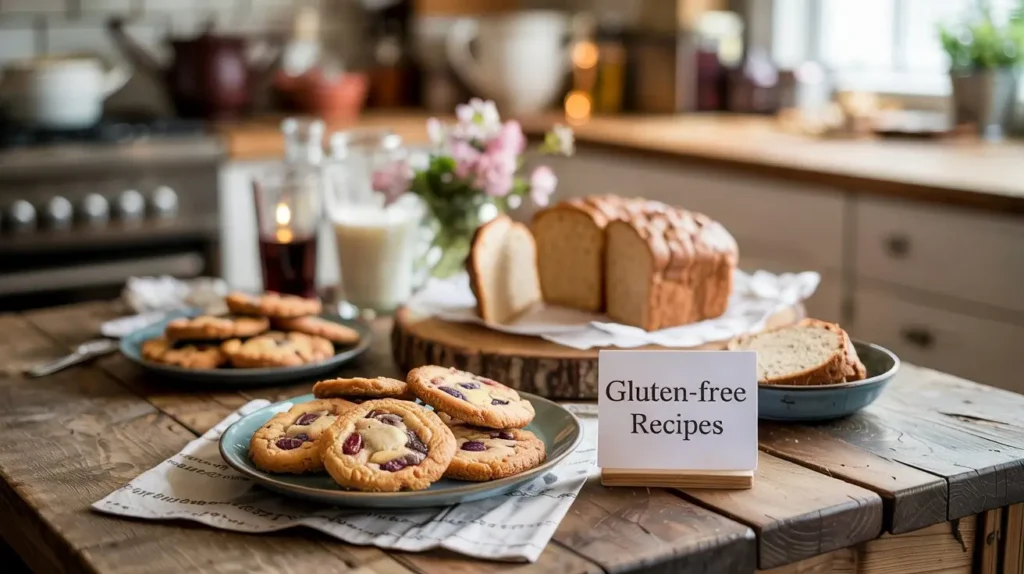
If you’re considering, or already living, a gluten free lifestyle, I have some exciting news for you: the benefits go far beyond just avoiding gluten. Whether you’re managing celiac disease, gluten intolerance, or simply exploring healthier eating habits, embracing this way of life can lead to profound improvements in your physical health, mental clarity, and even your impact on the environment. Let’s take a closer look at how going gluten-free can transform your life in meaningful ways.
Physical Health Improvements
One of the most immediate and noticeable benefits of a gluten-free lifestyle is the positive impact it can have on your physical health, especially if you’re sensitive to gluten. For many people, eliminating gluten leads to significant relief from uncomfortable symptoms and an overall boost in well-being.
Reduced Bloating and Improved Digestion
For individuals with celiac disease or gluten sensitivity, consuming gluten can wreak havoc on the digestive system. Symptoms like bloating, gas, diarrhea, and constipation are common, but they often disappear once gluten is removed from the diet. Many people report feeling lighter, less inflamed, and more comfortable in their bodies after making the switch.
Even if you don’t have a medical condition, cutting out processed gluten-containing foods (like bread, pasta, and baked goods) can reduce inflammation in your gut and promote healthier digestion. By focusing on whole, naturally gluten free foods like fruits, vegetables, lean proteins, and gluten-free grains, you’re giving your body the nutrients it needs to thrive.
Increased Energy Levels
Have you ever felt sluggish or fatigued after eating a meal heavy in gluten? That’s because gluten can trigger inflammatory responses in sensitive individuals, leaving them feeling drained. Once you eliminate gluten, many people experience a noticeable surge in energy. Imagine waking up refreshed, staying alert throughout the day, and no longer relying on caffeine to power through that mid-afternoon slump. It’s one of the most rewarding aspects of living gluten-free!
Bonus Perks
Other physical benefits include clearer skin (goodbye, acne!), improved joint pain, and better absorption of essential nutrients. When your gut heals and inflammation decreases, your entire body starts to function more efficiently. Trust me, it’s a game-changer.
Mental and Emotional Well-being
While we often think of gluten-free diets in terms of physical health, the mental and emotional benefits are just as impressive, and sometimes even more life-changing.
Banishing Brain Fog
If you’ve ever felt scattered, forgetful, or unable to focus after eating gluten, you’re not alone. Many people with gluten sensitivities report experiencing “brain fog,” a frustrating condition characterized by difficulty concentrating, memory lapses, and general mental fatigue. The good news? Eliminating gluten can clear up this fog, leaving you feeling sharper, more focused, and mentally agile.
Boosting Mood and Reducing Fatigue
Gluten intolerance doesn’t just affect your gut, it can also impact your mood and energy levels. Some studies suggest a link between gluten consumption and increased anxiety, depression, and chronic fatigue in sensitive individuals. By cutting out gluten, many people notice improvements in their emotional well-being, including reduced stress, enhanced mood stability, and a greater sense of calm.
Empowerment Through Choice
Beyond the physiological effects, there’s something deeply empowering about taking control of your health. Making intentional choices about what you eat fosters a stronger connection to your body and builds confidence in your ability to care for yourself. This mindset shift can be transformative, not just for your gluten-free journey but for your overall approach to wellness.
Environmental Benefits of Choosing Whole Foods
Here’s a bonus benefit that might surprise you: adopting a gluten free lifestyle can actually help reduce your environmental footprint, if you do it mindfully. How? By encouraging you to prioritize whole, unprocessed, plant-based foods over packaged alternatives.
Why Whole Foods Matter
Processed gluten-free products, like cookies, crackers, and frozen meals, are convenient, but they often come with a hidden cost: excessive packaging, preservatives, and resource-intensive manufacturing processes. On the other hand, whole foods like fresh produce, nuts, seeds, legumes, and gluten free grains (think quinoa, rice, and buckwheat) are not only healthier for you but also gentler on the planet.
By choosing whole foods, you’re supporting sustainable farming practices, reducing waste, and minimizing your reliance on industrial food production. Plus, many gluten-free staples, like beans, lentils, and seasonal vegetables, are affordable, eco-friendly, and packed with nutrition.
Embracing Plant-Based Options
A gluten-free diet naturally lends itself to incorporating more plant-based meals, which is great for both your health and the environment. Research shows that diets rich in plants require fewer resources (like water and land) and generate lower greenhouse gas emissions compared to animal-heavy diets. So why not double down on sustainability by filling your plate with vibrant salads, hearty grain bowls, and roasted vegetable dishes? Not only will you feel amazing, but you’ll also be doing your part to protect the planet.
Living a gluten-free lifestyle isn’t just about avoiding gluten, it’s about creating a foundation for holistic well-being. Here’s a quick recap of the incredible benefits:
- Physical Health: Say goodbye to bloating, indigestion, and fatigue while welcoming increased energy and vitality.
- Mental Clarity: Enjoy sharper focus, reduced brain fog, and a brighter mood as your body adjusts to a gluten free diet.
- Environmental Impact: Make conscious choices that benefit both your health and the planet by prioritizing whole, plant-based foods.
So whether you’re motivated by medical necessity, personal preference, or a desire to live more sustainably, embracing a gluten free lifestyle offers rewards that extend far beyond the dinner table. You’re nourishing your body, nurturing your mind, and contributing to a healthier world, all at the same time.
And now that we’ve covered the benefits, let’s move on to answering some frequently asked questions about gluten-free living. Whether you’re curious about dining out, reading labels, or finding tasty recipes, I’ve got answers to all your burning questions!
Gluten-Free Recipe Ideas to Try Today
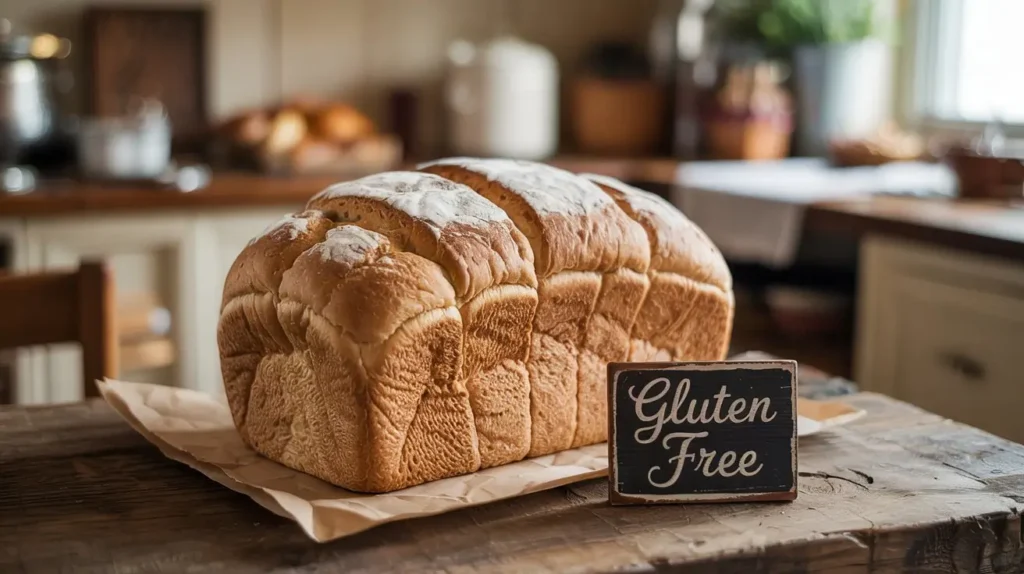
One of the best parts about living a gluten free lifestyle is discovering how delicious and satisfying your meals can be. Whether you’re whipping up breakfast, lunch, dinner, or snacks, there’s no shortage of creative, flavorful recipes to enjoy. To inspire your culinary adventures, I’ve put together four easy and nutritious gluten free recipes that are sure to become staples in your kitchen. Let’s get cooking!
Breakfast: Gluten-Free Pancakes with Fresh Berries
Start your day off right with these light, fluffy pancakes made from wholesome ingredients like almond flour or oat flour. They’re naturally gluten-free, packed with protein, and topped with fresh berries for a burst of sweetness.
Quick Recipe Idea
Here’s how to make them:
- In a mixing bowl, combine 1 cup of almond flour (or certified gluten-free oat flour), 2 eggs, ½ cup of unsweetened almond milk, 1 tablespoon of honey or maple syrup, 1 teaspoon of vanilla extract, and ½ teaspoon of baking powder.
- Heat a nonstick skillet over medium heat and lightly grease it with coconut oil or butter. Pour small amounts of batter onto the skillet to form pancakes. Cook until bubbles form on the surface, then flip and cook until golden brown.
- Top your pancakes with fresh berries (like strawberries, blueberries, or raspberries) and a drizzle of pure maple syrup or a dollop of Greek yogurt for extra flavor.
These pancakes are not only gluten-free but also nutrient-dense, making them the perfect way to fuel your morning. Plus, they’re so tasty that even non-gluten free eaters will love them!
Lunch: Quinoa Salad with Roasted Veggies
Looking for a quick yet satisfying lunch option? This quinoa salad with roasted veggies is a powerhouse of nutrients and flavor. It’s filling, colorful, and incredibly versatile, perfect for meal prep or a last-minute lunch idea.
Simple Recipe
Here’s what you’ll need:
- 1 cup of cooked quinoa (a naturally gluten free grain!)
- 1 cup of chopped vegetables (try bell peppers, zucchini, cherry tomatoes, and broccoli)
- 1 tablespoon of olive oil
- Salt, pepper, and your favorite spices (like garlic powder or paprika)
- Optional toppings: feta cheese (check for gluten-free labels), avocado slices, or toasted almonds
Instructions:
- Preheat your oven to 400°F (200°C). Toss the chopped veggies with olive oil, salt, and pepper, then spread them out on a baking sheet. Roast for 20-25 minutes until tender and slightly caramelized.
- In a large bowl, combine the cooked quinoa and roasted veggies. Add a squeeze of fresh lemon juice or balsamic vinegar for brightness.
- Top with optional ingredients like creamy avocado or crunchy nuts for added texture and flavor.
This dish is not only gluten-free but also rich in fiber, protein, and antioxidants. It’s a nutrient-packed meal that will keep you energized all afternoon!
Dinner: Grilled Chicken with Garlic Mashed Cauliflower
Who says comfort food has to include gluten? This grilled chicken paired with creamy garlic mashed cauliflower is a cozy, gluten-free twist on a classic favorite, and it’s just as indulgent as the original.
Comforting Recipe
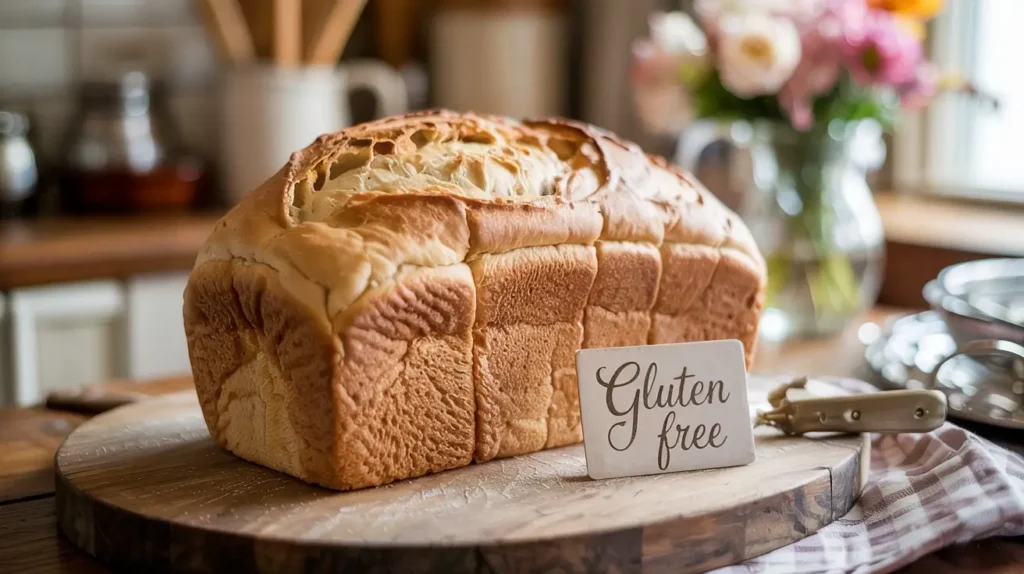
Here’s how to make it:
- Season two boneless, skinless chicken breasts with salt, pepper, garlic powder, and a pinch of paprika. Grill them on medium-high heat for 6-7 minutes per side, or until fully cooked through.
- While the chicken is grilling, prepare the mashed cauliflower. Steam 1 head of cauliflower (cut into florets) until soft, about 8-10 minutes. Drain and transfer to a food processor or mash by hand.
- Add 2 tablespoons of butter, 2 cloves of minced garlic, a splash of almond milk (or regular milk), and a pinch of salt and pepper. Blend until smooth and creamy.
- Serve the grilled chicken alongside the mashed cauliflower for a hearty, comforting meal that’s completely gluten-free.
This dish proves that you don’t need potatoes or bread to enjoy a satisfying dinner. The garlicky mashed cauliflower is a game-changer—you won’t miss the carbs at all!
Snack: Homemade Energy Balls
Need a quick, portable snack to curb hunger between meals? These homemade energy balls are a no-bake treat made with wholesome ingredients like dates, nuts, and cocoa powder. They’re gluten-free, vegan-friendly, and oh-so-delicious.
No-Bake Snack Recipe
Here’s what you’ll need:
- 1 cup of pitted Medjool dates
- ½ cup of almonds (or any nut of your choice)
- 2 tablespoons of cocoa powder
- 1 tablespoon of chia seeds or flaxseeds
- 1 teaspoon of vanilla extract
- A pinch of sea salt
Instructions:
- Place the dates, almonds, cocoa powder, chia seeds, vanilla extract, and sea salt in a food processor. Pulse until the mixture forms a sticky dough.
- Scoop out tablespoon-sized portions of the mixture and roll them into bite-sized balls.
- Refrigerate for 30 minutes to firm up before serving. Store leftovers in an airtight container in the fridge for up to a week.
These energy balls are the perfect grab-and-go snack, they’re sweet, chewy, and packed with healthy fats and fiber to keep you satisfied. Pair them with a cup of tea or coffee for an afternoon pick-me-up.
There you have it, four mouthwatering gluten-free recipes to try today! From fluffy pancakes for breakfast to creamy mashed cauliflower for dinner, these dishes prove that eating gluten free doesn’t mean sacrificing flavor or variety. And let’s not forget those no-bake energy balls, they’re a lifesaver when you need a quick snack on the go.
The beauty of gluten-free cooking is that it encourages creativity in the kitchen. Experiment with new ingredients, swap out traditional staples for gluten free alternatives, and most importantly, have fun with it. You might just discover some new favorites along the way.
Ready to take your gluten-free journey to the next level? Keep exploring, stay inspired, and remember, you’re building a healthier, happier version of yourself one delicious meal at a time!
FAQ About Gluten Free Living
Q: Can I still eat out if I’m gluten-free?
- Answer: Yes, but research restaurants beforehand and communicate dietary needs clearly.
Q: Will I lose weight on a gluten free diet?
- Answer: Weight loss depends on overall calorie intake and food choices, not just going gluten free.
Q: Is gluten-free food safe for everyone?
- Answer: Yes, but unnecessary for people without celiac disease or gluten sensitivity.
Living a happy, healthy, gluten free life is not only achievable, it’s incredibly rewarding. Whether you’re managing celiac disease, navigating gluten intolerance, or simply exploring this lifestyle for its potential health benefits, the journey to gluten-free living is one of empowerment, discovery, and nourishment.
Throughout this guide, we’ve covered everything from understanding gluten and stocking your pantry with essentials to debunking myths and savoring delicious gluten free recipes. Along the way, I hope you’ve gained the tools, knowledge, and confidence to embrace this lifestyle with ease and enthusiasm. Remember, going gluten-free isn’t about restriction, it’s about making intentional choices that support your body, mind, and even the planet.
So, what’s next? Start small. Focus on whole, nutrient-dense foods. Get creative in the kitchen. And don’t be afraid to ask questions or advocate for yourself when dining out or attending social gatherings. With time, you’ll find that living gluten-free opens up a world of vibrant flavors, improved well-being, and endless possibilities.
Looking for an easy way to transform your favorite boxed cake mix into a gluten-free treat? Try this Gluten-Free Boxed Cake Mix Replacer from Allrecipes for a simple, foolproof solution!
You’ve got this! Every step you take toward a gluten free lifestyle is a step toward a healthier, happier you. So grab that almond flour, fire up the grill, or whip up a batch of energy balls, your journey starts today.
Thank you for joining me on this gluten free adventure. I’m cheering you on every step of the way, and I can’t wait to hear about all the delicious meals and positive changes you’ll experience along the way. Here’s to living your best gluten-free life!
Did You Try Our Recipe?
There are no reviews yet. Be the first one to write one.

